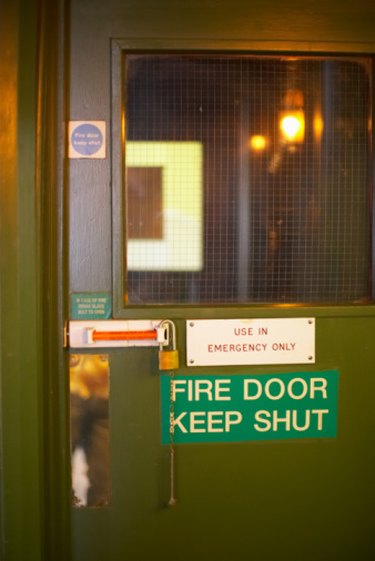
Architects and engineers prescribe the use heat or fire resistant wood in buildings and applications where public safety is critical and other fire safety measures are not sufficient. Heat resistant woods are made of plywood, lumber, shakes and shingles pressure-treated with a fire-retardant mixture that protects it from the effects of fire and extreme temperatures. This both inhibits the starting of fires and the spread of flames if a fire starts. The type of heat resistant wood used on a project depends on the purpose it is used for and the specifications set by local authorities.
Class A
Video of the Day
Class A heat resistant wood, also known as class I, must show no evidence of progressive combustion after 30 minutes in contact with fire. This type of wood must also display a flame spread index of 25 or less. A flame spread index measures a material's resistance to heat and flames and the rate of flame travel over its surface. In this index, untreated wood scores 100 and reinforced concrete scores zero.
Video of the Day
Class B
Heat resistant wood must have a flame spread index of 26 to 75 to be considered class B, or II, heat resistant wood. You can upgrade your home's untreated wood heat resistance to a class B fire rating by adding a fire retardant paint additive to an interior latex paint.
Class C
Class C is the lowest grade of heat resistance wood. In fact; wood in this category has a flame spread index of 76 to 200, so class C wood can be twice as flammable as untreated lumber.
Reinforced Heat Resistant Wood
The heat or fire resistance of a material is calculated by adding the fire rating of all its components. This allows builders to upgrade the heat resistance of wood by adding a layer of regular gypsum board. For instance; a 20-minute wood-stud wall can be upgraded to a 65-minute fire resistant wall by adding a regular gypsum board, which adds 30 minutes; and inserting fiber insulation between the wooden studs, which adds another 15 minutes.